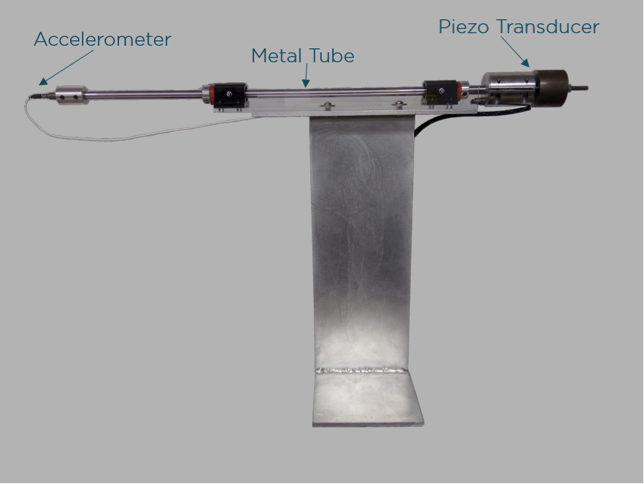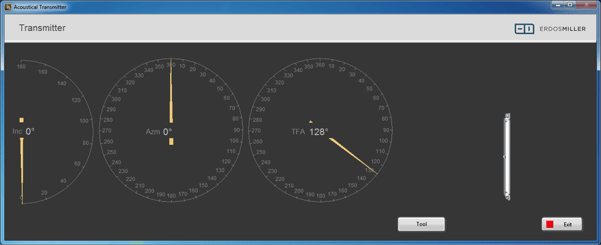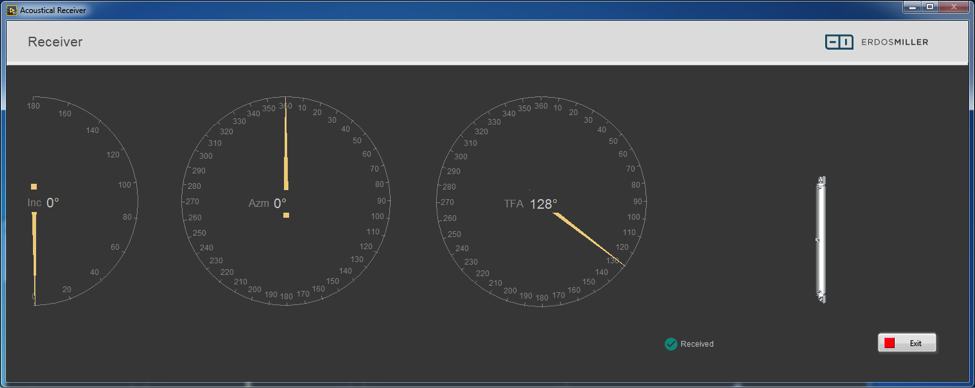Acoustic Transmission Solution for Downhole Tools with LabVIEW
As an NI Embedded Specialty partner at NI Week, Erdos Miller was invited to showcase the power of our prototyping solutions featuring a flexible hardware platform to simulate and test complex equipment before building an embedded solution.
In our Acoustic Demo, we used a high temperature, high shock downhole tool, to poll for inclination, azimuth and tool-face. The system includes a LabVIEW and NI-hardware-based receiver that decodes an acoustic waveform and displays it on a screen.
Then the downhole tool's orientation information is encoded into pulse packets; these packets actuate the piezo transducer. Sound from the piezo transducer travels down the metal tube and is measured by an accelerometer.
Figure 1 shows the Acoustic Demo Stand; the Piezo Transducer is on the right side and an accelerometer is on the left. The metal tube between the two is the transmission medium.

Figure 1: Acoustic Demo
Why would we do this?
Drillers use real-time measurement while drilling (MWD) data to make decisions while downhole drilling. The closer the sensors are to the drill bit, the more accurate the measurements are and the productive downhole drilling operation can be. As part of a typical drill-string, the MWD provides drilling telemetry to the surface. Sensors that are part of the MWD acquire and transmit data to the Micro Processing Unit (MPU) over a serial communication bus within the downhole tools. However, the MWD might be more than 30 feet from the drill bit and often cannot be placed closer due to physical limitations of the drill string and the MWD system. More accurate measurements from the downhole tools would require sensors placed closer to the drill bit. An alternative option is to place a compact sensor package close to the bit and use acoustic transmission to send sensor data back to the MWD, so it can then be telemetered to the surface.
How it works.
The Acoustical Transmitter software for downhole tools communication was developed in LabVIEW by the Erdos Miller team and it translates the downhole tool’s orientation information into pulse packets. These packets are then sent to an analog output module which provides the driving signal that actuates the piezo transducer.

Figure 2: Acoustic Transmitter User Interface
The Acoustical Receiver software acquires the accelerometer signal, filters, and decodes the pulse packets to display the downhole tool's orientation information on the UI. Figure 3 is the shows the Acoustical Receiver UI, which displays the received inclination, azimuth, toolface and an image of the tool.

Figure 3: Acoustic Receiver User Interface
Why did we use NI LabVIEW and NI hardware?
Developing embedded systems can take up to years to design and validate. By using LabVIEW and NI hardware, we can rapidly develop and test data coding and modulation techniques without having to design any downhole or test hardware. Doing so allows us to remain flexible in our feasibility and testing phase.
We used LabVIEW and NI Hardware to generate transmission signals, acquire the acoustic wave, analyze the acquired data, and log the results all while running the test in a high temperature, high shock environment such as that used in downhole drilling. We have the ability to change testing parameters on the fly, change the frequency of the data being transmitted, test various modulation schemes, run various analysis algorithms on the data being acquired in real time and display the results on screen. Based on the results of the analysis, we were able to quickly determine the feasibility of acoustic transmission near the drill bit.
What would a prototyping solution mean to your business? Learn more about our electric device development
Get more LabVIEW best practices in our white paper, “3 Strategies for Developing Efficient LabVIEW Projects with a Team-Based Approach”




